How to Find the Right Saddle Position on Your Bike
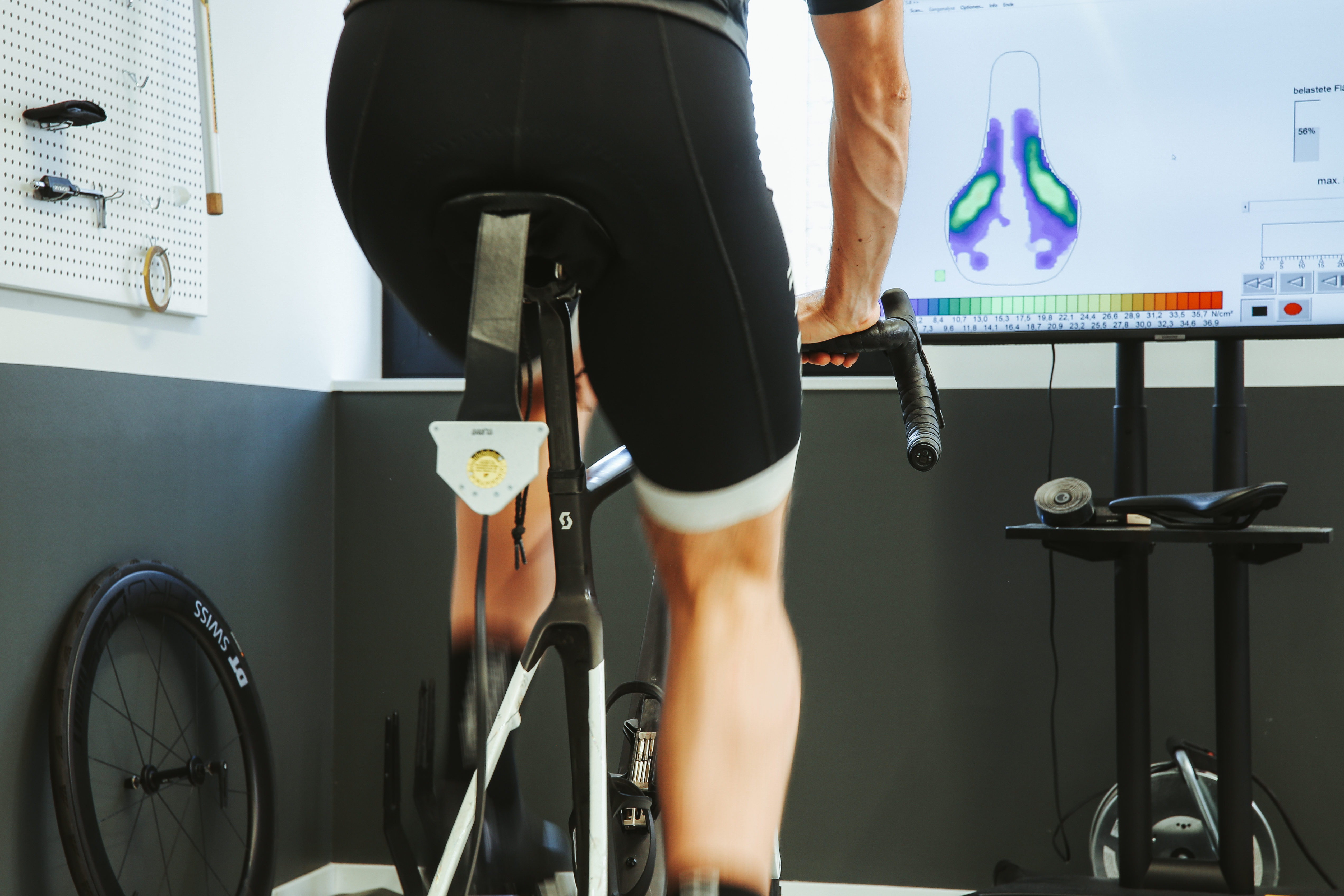
When you sit on a bike, your entire body weight rests on two contact points: the handlebar and the saddle. Therefore, it is crucial to adjust your saddle position correctly. Only with the correct posture can you ride effectively and, most importantly, pain-free. Here, we show you how to optimally adjust your saddle position to enjoy a fantastic riding experience with the best performance.
Why you should optimize your saddle position
It is astonishing how many riders accept "a bit of pain" as part of cycling. An incorrect saddle position can lead to serious health problems. A saddle set too high can cause discomfort in the thighs and strain the back, as the pelvis tilts too much sideways to reach the pedals. Conversely, a saddle set too low tires the leg muscles faster and can lead to joint pain or back problems. If you want to learn more about this topic, you can check out our ergonomics website or watch our expert video on saddle selection, where everything is explained clearly.
The correct adjustment needs the correct saddle
Optimizing the saddle position starts with choosing the right saddle. Make sure you have a suitable saddle for you and your riding style. Gender-specific saddles from Ergon are optimally adapted to the anatomy of women and men. If you are unsure which model is right for you, it is best to use our Saddle Selector.
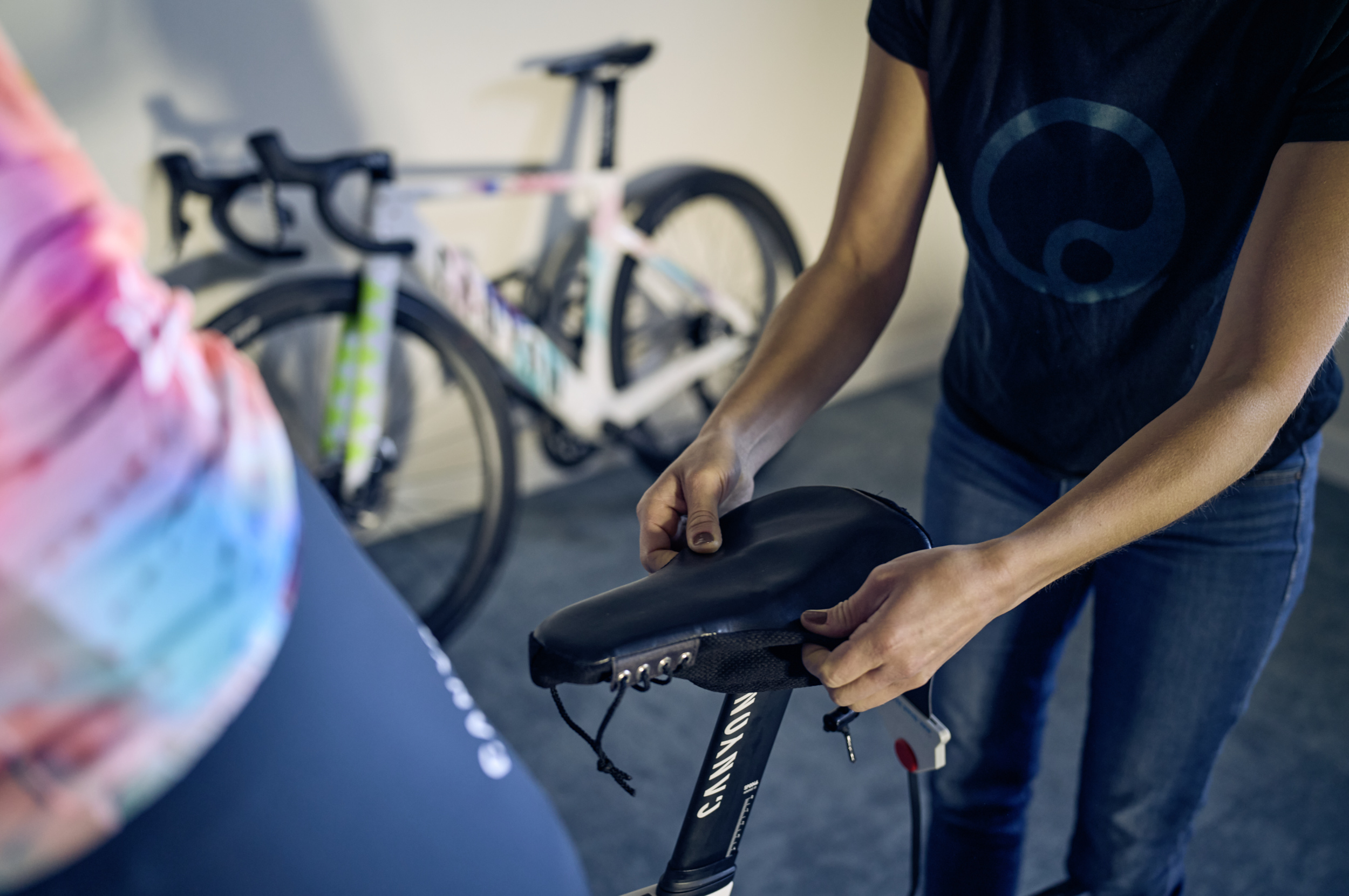
How to properly adjust your bike saddle
Several factors influence your sitting position on the bike:
- Saddle height: It determines the distance to the pedals and, together with the handlebar height, the tilt angle of your upper body.
- Saddle angle: Correct saddle angle distributes pressure evenly on the sit bones and prevents numbness.
- Horizontal saddle adjustment: It affects the distance between the saddle and handlebars (setback), which is crucial for a harmonious pedaling motion and a healthy posture.
You can make these adjustments directly on your bike once you have determined the correct values for your body.
Adjusting the saddle height
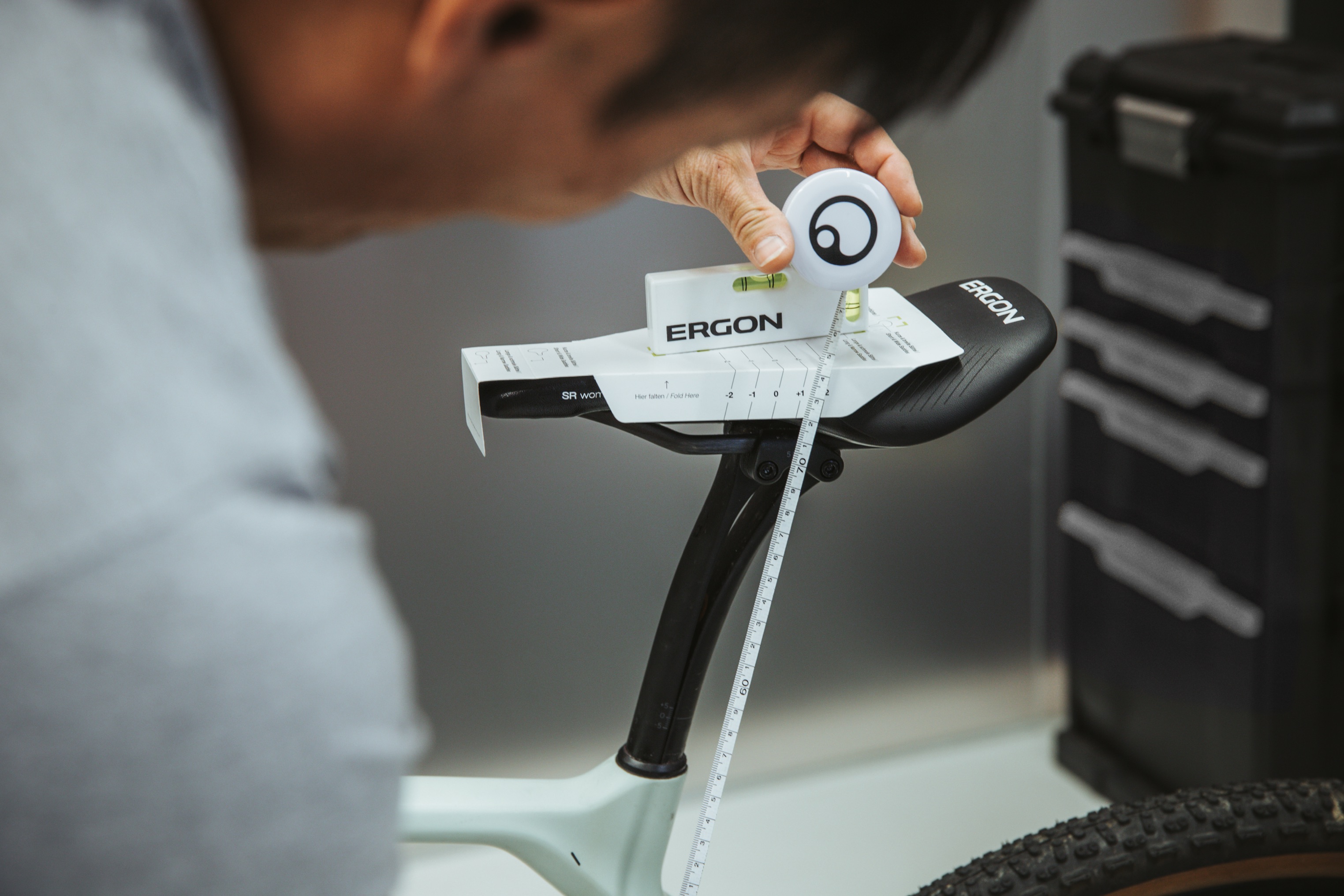
To determine the correct saddle height or seat height, you need to measure your inseam. Stand against a wall without shoes, hold a book between your legs as high as you can without causing pain, and measure from the top edge of the book to the floor. Use this measurement to adjust the saddle height using a table or calculator. The distance to be set extends from the center of the bottom bracket to the top edge of the saddle. This method is the simplest way to determine this value with items usually found at home, such as a tape measure. If you want more precise fit, try our Fitting Box. With the Fitting Box, you can measure many more values and perfectly adjust your bike to your body. Only with the correct fitting to the bike can you protect your joints and muscles. We also have a video on our Bike Ergonomics channelabout saddle height.
Adjusting the saddle angle
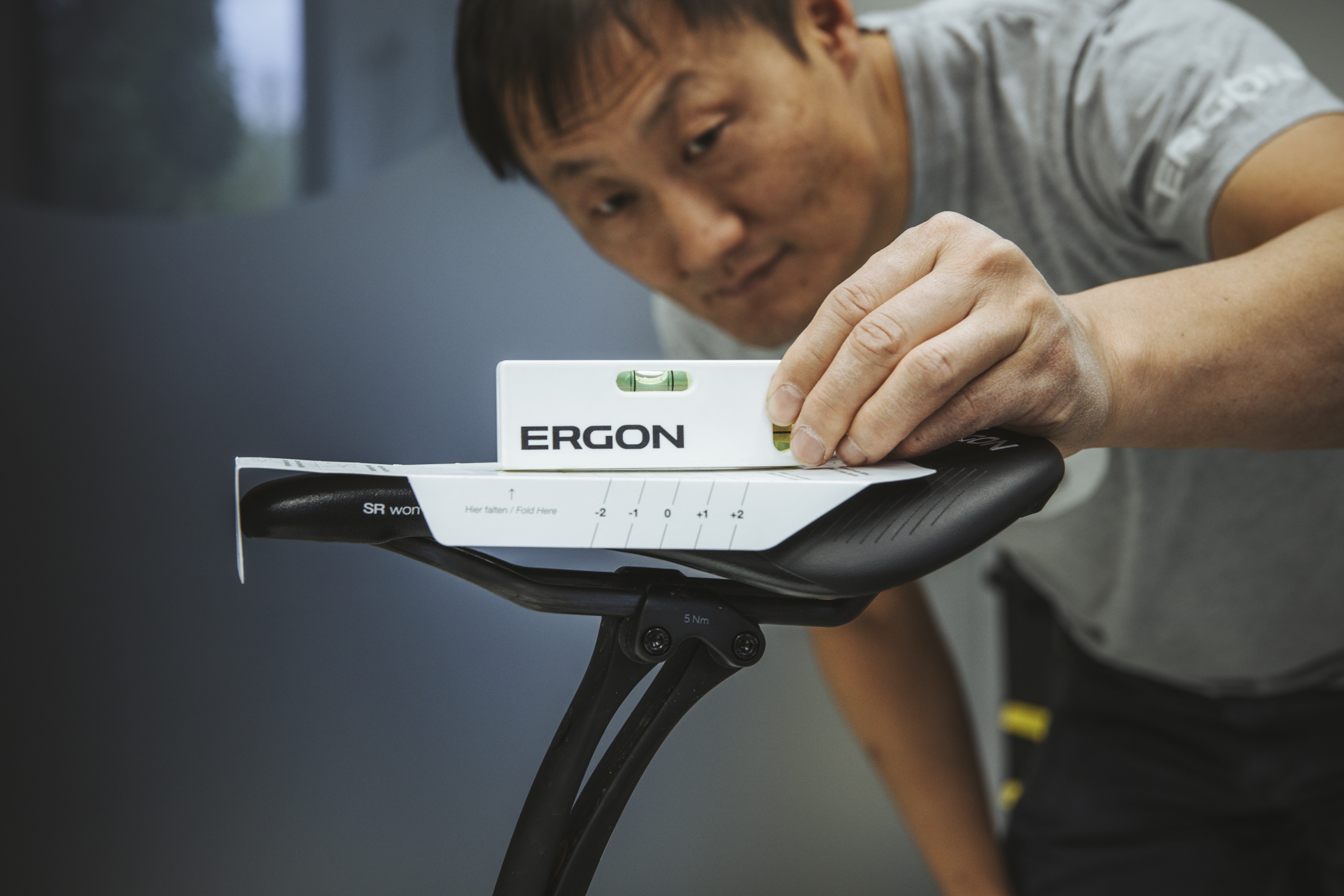
If you experience numbness in the genital area or pain in your hands and neck, it may be due to incorrect saddle angle. A spirit level can help you adjust the saddle correctly. This is included in our Fitting Box. For road bikes and gravel bikes, the tilt may vary; therefore, check your settings. We offer several Fitting Box variants for different styles of bikes.
Horizontal saddle adjustment
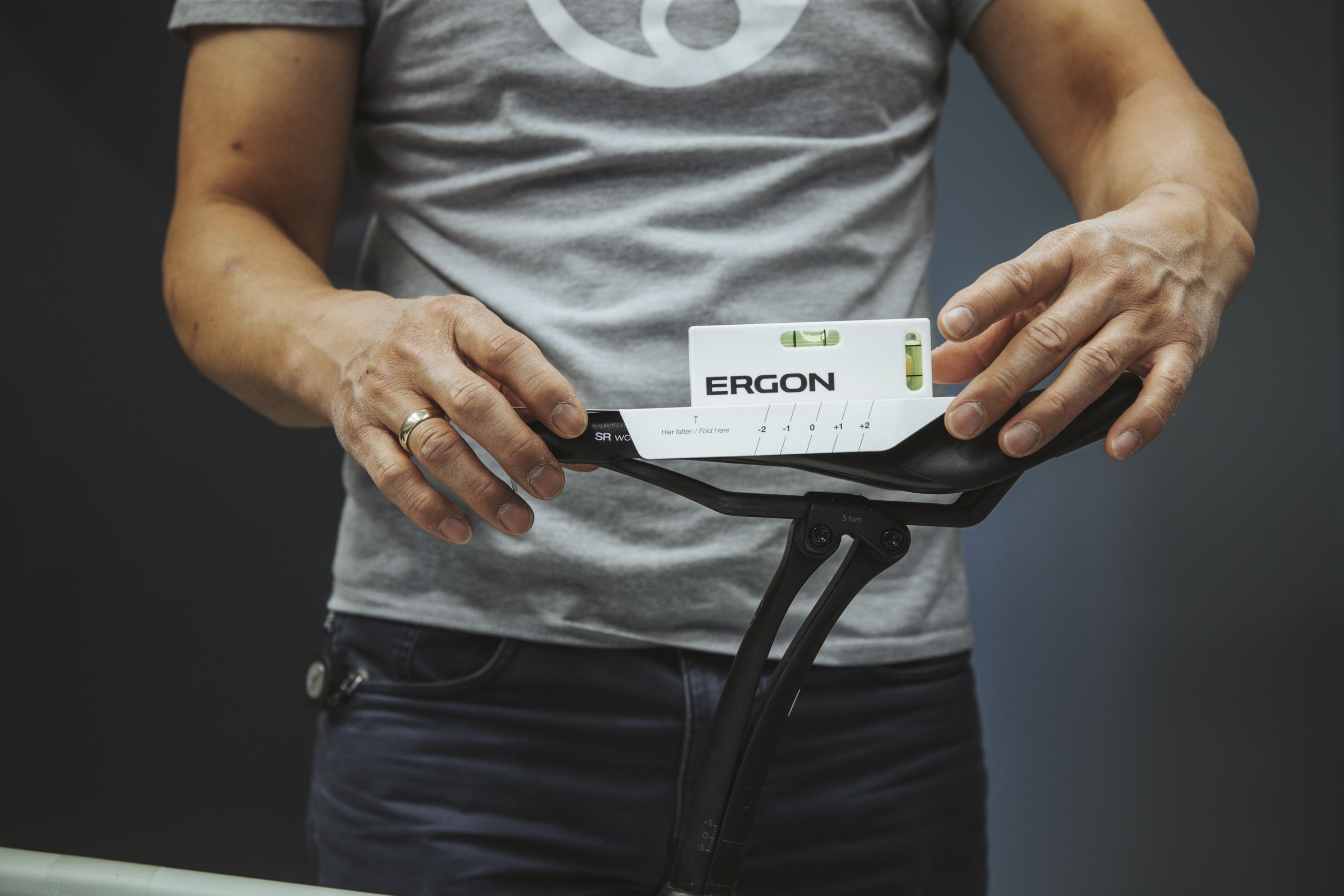
Horizontal saddle adjustment, also known as setback, refers to the position of the saddle along the longitudinal axis of the bike and determines the angle of the torso. An incorrectly adjusted setback can lead to numb hands and neck or back pain. For sporty riding and frequent climbs, it is advisable to place the saddle further forward.
This video from Ergon summarizes everything important you need to know about the correct adjustment of the bike saddle and saddle position.
Further adjustments and individual customizations
In addition to the correct saddle position, the height of the stem, handlebar position, and cockpit must also be adjusted accordingly. This applies regardless of whether you ride a road bike, triathlon bike, trekking bike, or mountain bike, although the calculation of saddle height differs slightly. A holistic adjustment to your body size improves your riding results and comfort. Note that your saddle padding, shoes, and the thickness of your cycling shorts can also influence the optimal saddle position. Our ergonomics video on the cockpit summarizes everything important.
Ergonomics of your position on the bike - The saddle area
When cycling, most of your body weight rests on the relatively small saddle surface. The saddle contact area is one of the most sensitive regions of the body, often leading to strain and seating problems.
Why do I get saddle problems?
The perineal and genital area is pressure sensitive. If body weight is not evenly distributed, pressure points can cause uncomfortable saddle problems. Compression of nerves and blood vessels causes numbness and discomfort.
What can I do against saddle pain?
For healthy pressure distribution, the distance between the sit bones and the tilt of the upper body should harmonize. The correct saddle width is crucial to direct pressure to the insensitive areas. A relief channel in the saddle helps reduce pressure in the perineal and genital area.
Gender-specific adjustments
Female anatomy
Women have higher flexibility in the pelvic area, causing the pelvis to tilt more forward on the saddle. This often leads to high pressure in the genital area. A saddle with a relief opening positioned far forward and wide saddle flanks can help. If you want to know more about this topic, this video explains the important role of anatomy in women's saddles.
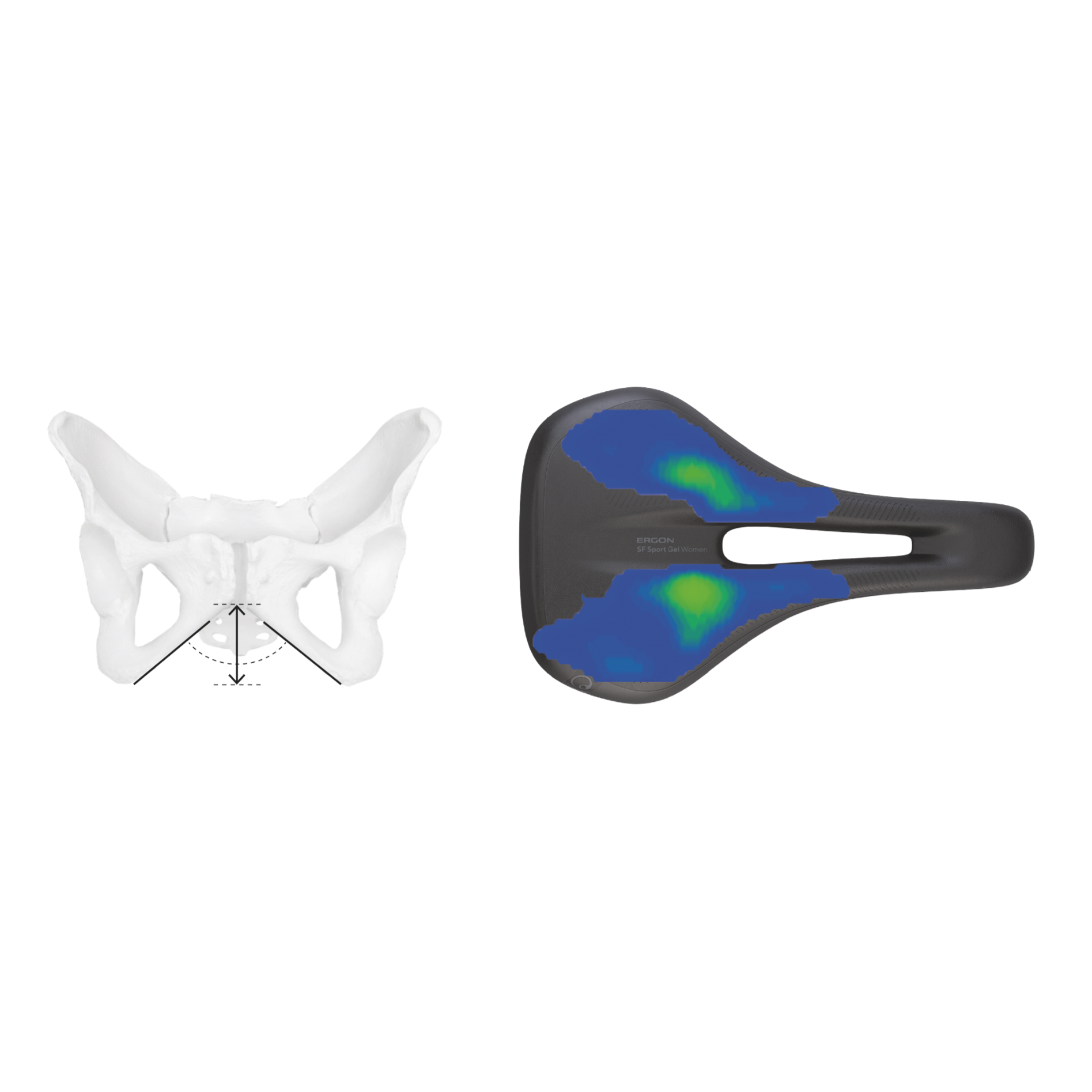
Male anatomy
Men usually sit more upright and put more pressure on their sit bones. A deep relief channel provides noticeable pressure relief in the perineal area and improves blood circulation. We have collected more information on men's health and bike saddles in this video.
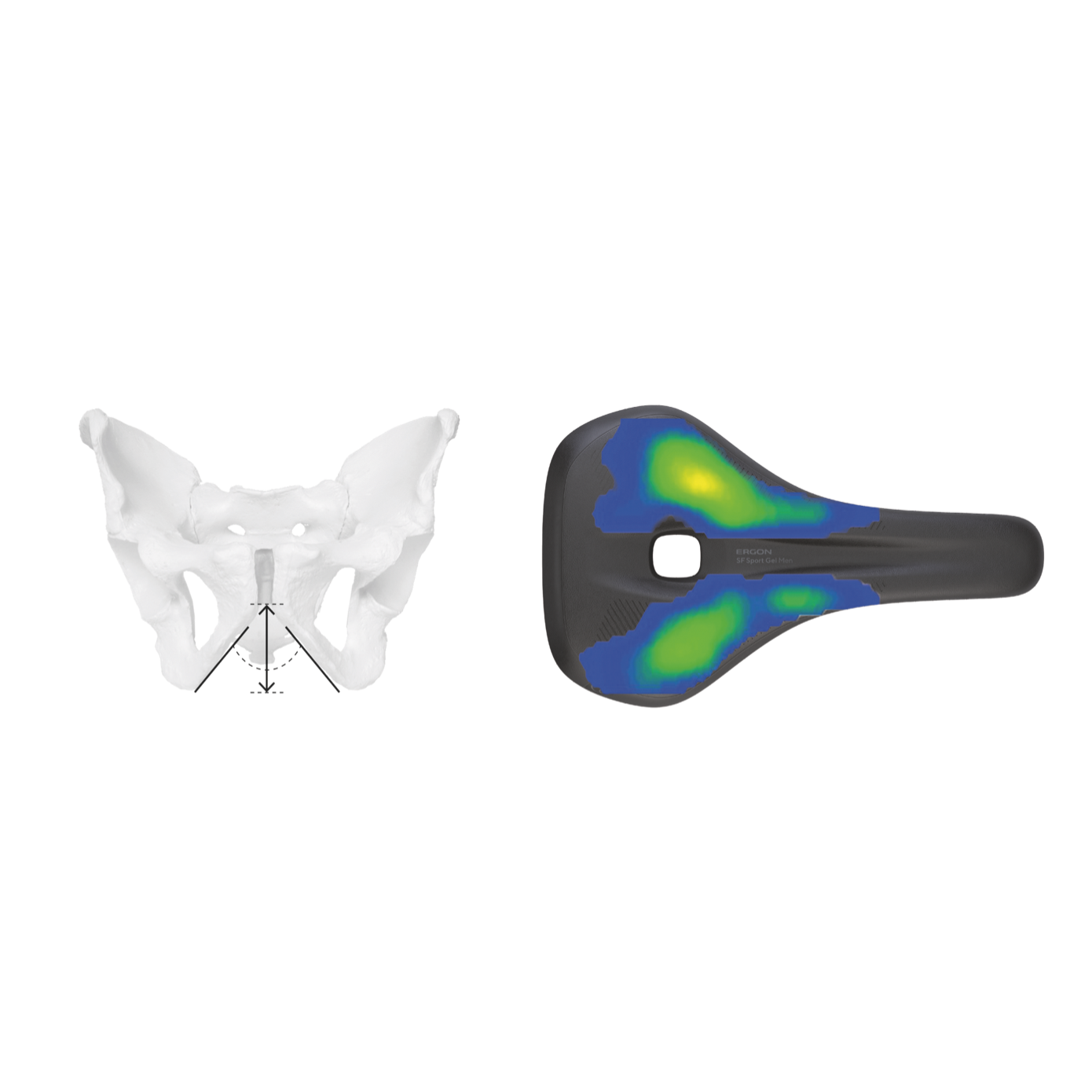
The Dynamic position
Cycling is not static. The body adapts to pressure through slight changes in sitting position. Ergon saddles are designed for dynamic sitting, increasing comfort.
Conclusion: Finding the optimal saddle position
To achieve the greatest comfort while cycling, you should first optimally adjust the position on the bike based on the saddle height. Measure your leg length and adjust the saddle accordingly. But to sit truly comfortably, you also need to adjust the saddle angle correctly. We recommend using a spirit level, which is included in our Fitting Box. Finally, horizontal saddle adjustment optimizes the distance between the saddle and handlebars. A holistic adjustment of the contact points between bike and body, including gender-specific aspects and dynamic sitting positions, leads to a comfortable and pain-free riding experience. Try different settings and test until you find the optimal configuration. For more information on pain-free cycling with an e-bike, check out this video on our Bike Ergonomics channel.Have fun and enjoy your ride!